Here are 13 animals with glorious manes, from lions and horses to camels and a wolf that isn’t a wolf! Let’s dive in and discover why a crowing glory has several practical functions.
What Is a Mane?
First up, what is a mane? Well, it’s hair that grows about the neck and head of some animals. Depending on the species, manes range from long and flowing locks to short and bristly.
The most obvious maned animal is a lion, and we’ll get to that later, but manes aren’t just so the king of the jungle can show off. A mane provides tangible benefits, too.
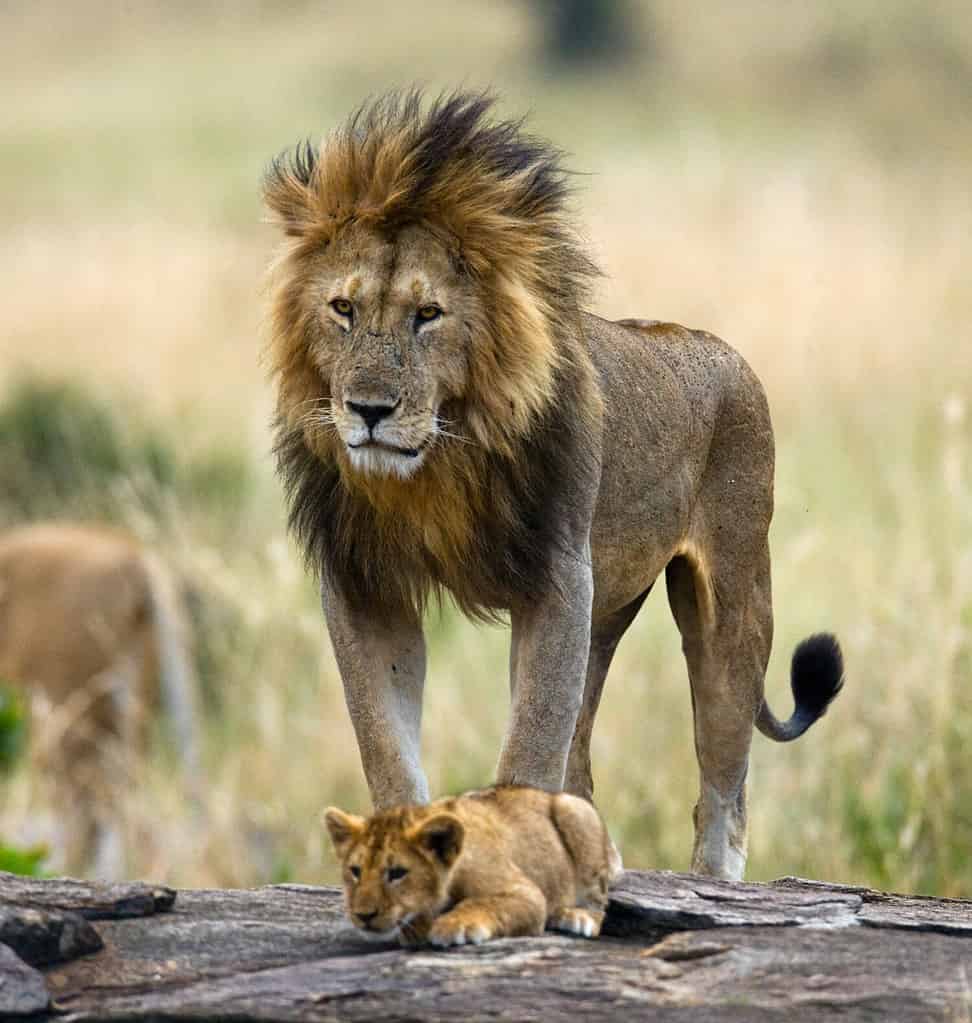
Manes indicate sexual maturity and provide protection from the elements, pests, or attacks.
©GUDKOV ANDREY/Shutterstock.com
What Is a Mane For?
Manes don’t just look glorious; they have a purpose. Here are some of the functions that manes provide animals.
Sexual Maturity
A mane signifies sexual maturity. For example, a fully grown luscious African lion’s mane shows he is well nourished, full of sexual vigor, and has great mate potential. Lionesses can’t resist a full dark mane of hair around a lion’s head.
Protection in Fights
Animals that fight for dominance, such as lions or prey animals like antelope and horses, have manes to help protect their head and neck from attack. This is why some manes extend along the neck and underbelly.
Pest Control
A mane helps prevent pests from getting into an animal’s ears and eyes. Imagine ticks and fleas walking over your body. They’re heading for your face, but a bristly, thick mane stops them. For animals without hands, as we have, a mane is a pest-repellent sanity saver.
Element Protection
Manes keep animals warm in cold climates, just like a snuggly scarf, and cool in hot climates. For example, a horse’s mane and forelock help keep wind-blown dust and scorching sunlight from its eyes.
Now we know what manes are for, let’s discover 13 animals that have glorious manes.
1. Lion

A lion’s mane indicates his health and sexual vigor to females and competing males.
©SteffenTravel/Shutterstock.com
A lion is the first animal we think of when it comes to manes, but not all lions have full-flowing 16-inch long manes like photogenic African lions. Some lions, such as the “maneless” lions in Africa’s Tsavo National Park, have short manes. Experts think it’s an evolutionary development to help them cope with excessive heat.
Primarily, a lion’s mane indicates his fitness and strength, two essentials in the wild. A thick, preferably dark mane indicates to females that he is strong enough to defend the pride and its cubs from attack. His strong, glossy mane genes will pass to their offspring, giving them a better shot at survival.
And when it comes to battle, because younger male lions always try to muscle in on a male’s pride, manes offer protection against teeth and claw attacks.
However, it may not even get that far. A gloriously thick mane is a visual sign not only to the ladies but to male competition. A good mane can prevent battles.
Did you know less than 23,000 lions are left in the wild and have disappeared from 90% of their native range? That’s even less than elephants.
2. Zebra
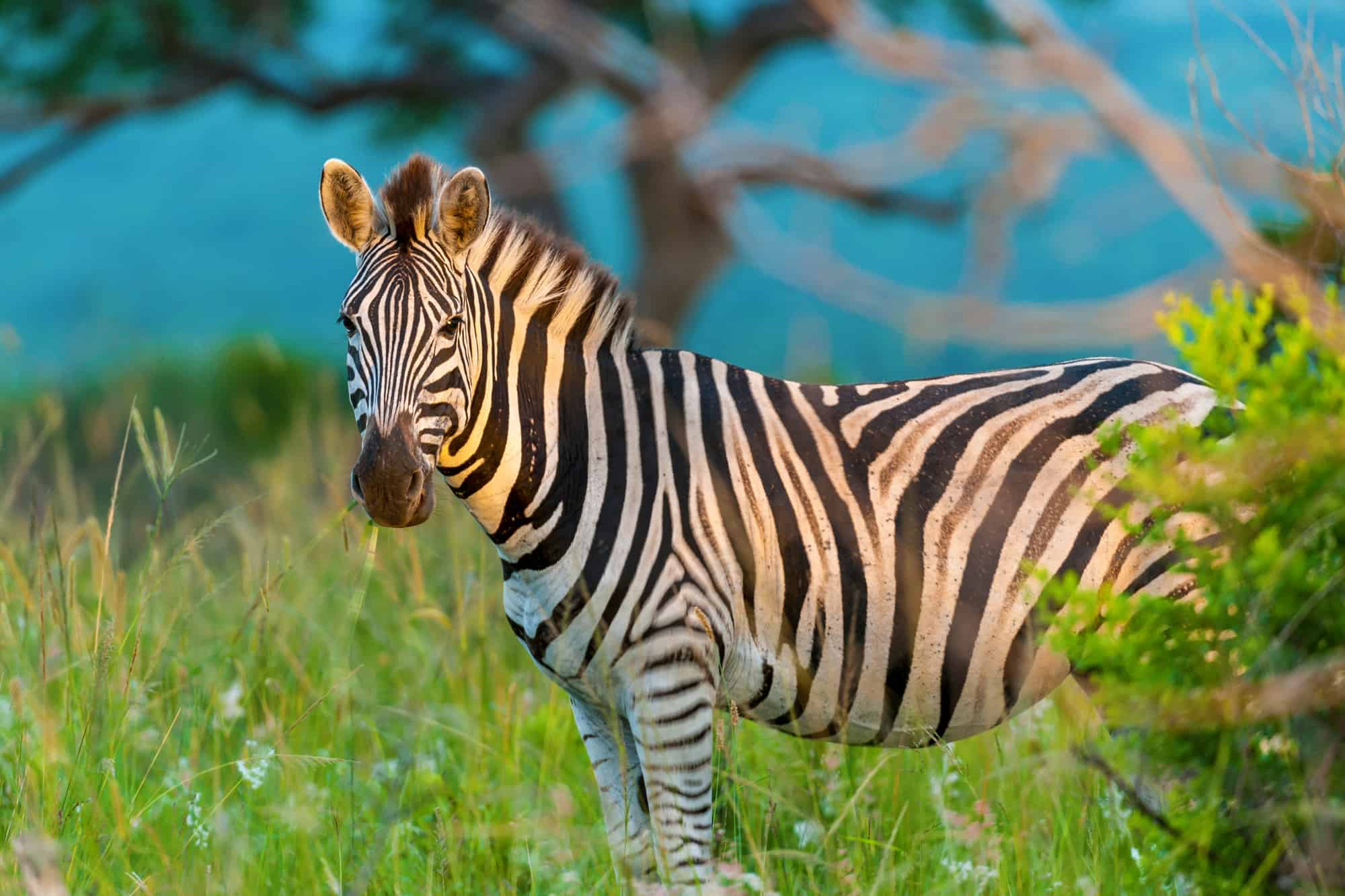
Zebras have short, dense, and erect manes.
©Roger de la Harpe/Shutterstock.com
Stripy zebras have a distinctive mohawk mane that matches their black and white stripes. Why is a zebra’s mane spiky? Well, experts think an erect mane keeps a zebra cooler in hot countries than a thick-flowing mane.
A dense, upright mane also gives the impression of a thick and hard-to-bite neck. Because zebra are prey animals, a lion might think twice about attacking a zebra with a large neck. Plus, during in-fighting between zebras, they kick and bite, with bites specifically directed toward the back of the neck. A mane helps cushion the impact.
And as with lions, the bigger the mane, the more impressive the male zebra. A thick mane points toward health. It puts off competitors and attracts females.
3. Giraffe

Baby giraffes are born with manes that grow thick as they mature.
©SYUNIMU/Shutterstock.com
Long-necked giraffes show off thick, bristly, golden-brown, and cream manes that run along the length of their epic necklines. In adult males, this means seven feet of mane — that’s nearly half its body length.
Unlike lions, baby giraffes are born with manes in situ. Experts think the purpose of a giraffe’s mane is temperature control, defense against pest and elemental irritation, and some form of visual and physical protection against attacks.
Did you know giraffes have seven vertebrae like humans, but each giraffe vertebrae is over 10 inches long?
4. Wildebeest
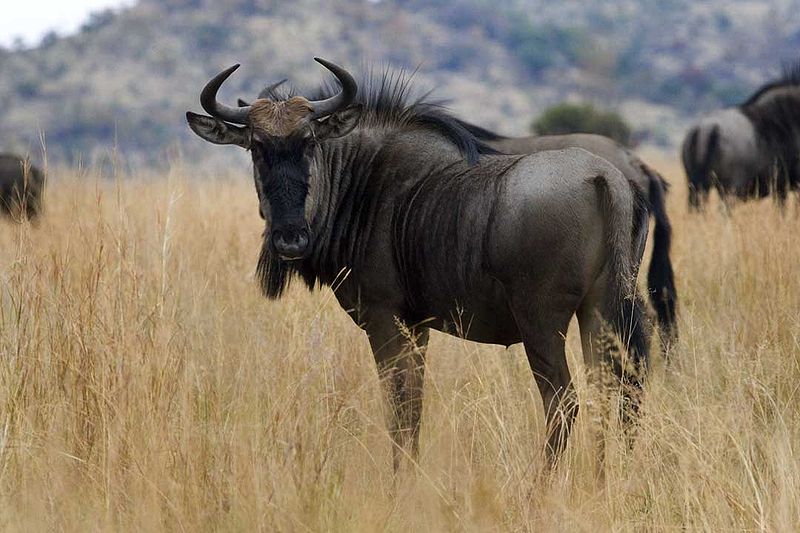
Wildebeest live on Africa’s savannah grasslands.
©Steve Evans / Creative Commons – License
Both genders of wildebeests have glorious manes. Nyassaland wildebeest have long, stiff manes in jet black, but western and eastern white-bearded species have flat, softer manes.
Wildebeest manes offer protection against the elements and attacks from large predators that chiefly bite the neck. As wildebeest mature into adulthood, their manes grow larger, so they may also be a sign of sexual maturity and health, too.
Wildebeest look like cows or oxen, but they’re actually a broad-shouldered antelope! They live on the grasslands of Africa, and it’s an incredible sight when they migrate in their thousands.
5. Maned Wolves
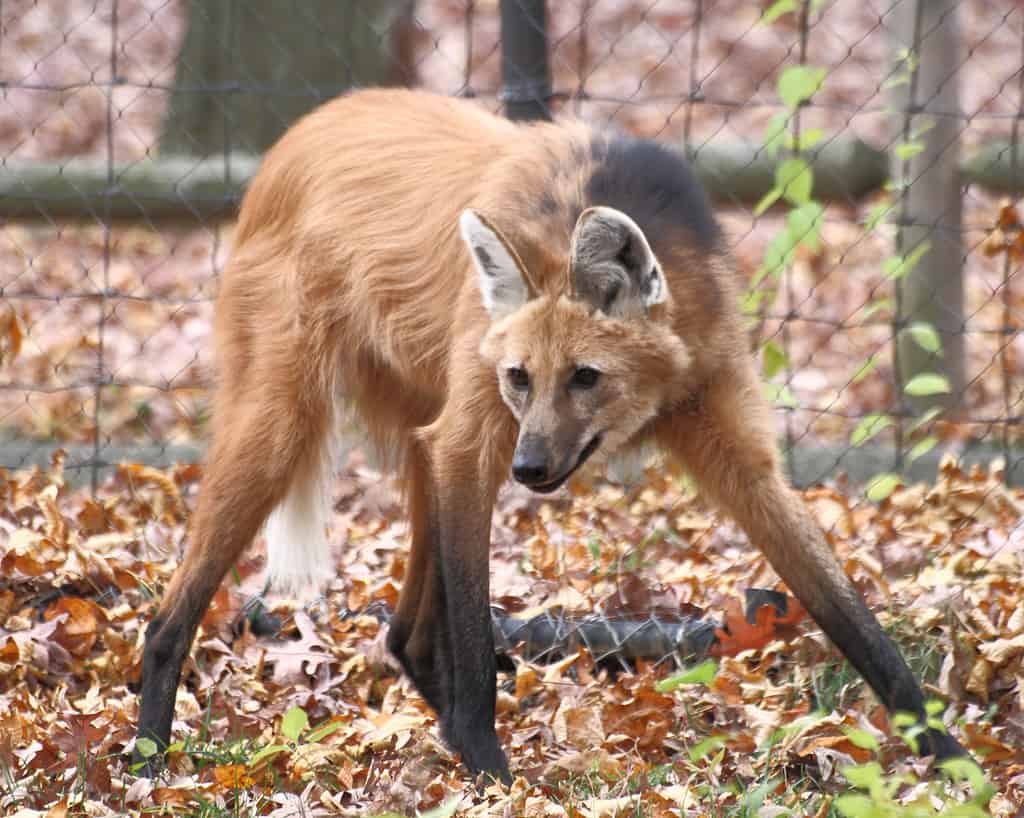
A maned wolf resembles a long-legged red fox with a shaggy black mane of hair.
©Sage Ross, CC BY-SA 3.0, via Wikimedia Commons – License
Maned wolves live in South America’s high grass savannahs, but despite the name, they look more like a long-legged red fox than a gray wolf.
These canids stand around three feet tall at the shoulder and weigh 50 pounds. Their soft, short-length black manes run head to shoulders and match their long black legs. This smart camouflage helps maned wolves blend into long-grassed savannahs when they hunt at dawn and dusk.
Manes also help protect them against large cat predators and during fights over females. When threatened, maned wolves raise their mane hair on end to increase their size. This tactic can even prevent a damaging fight in the first instance.
6. Yak
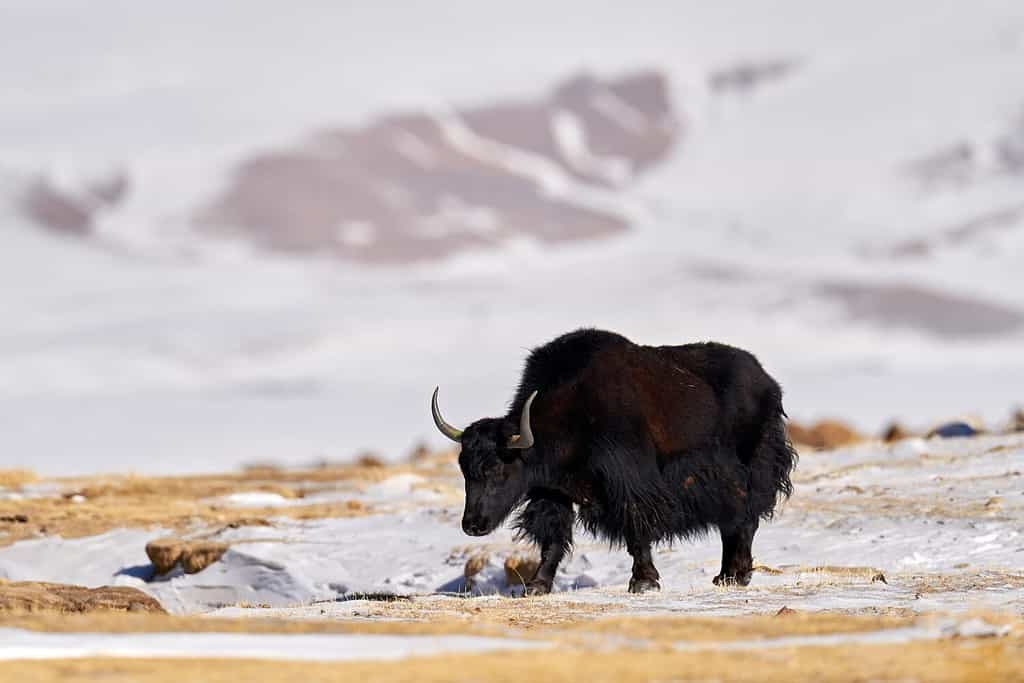
A yak’s thick mane protects it from cold winds and snow.
©Ondrej Prosicky/Shutterstock.com
Yak are large domesticated bovines with gloriously shaggy gray manes on their neck and shoulders.
These large animals have bulky frames and very long, dense fur that hangs down past their knees. A dense insulating undercoat keeps yak warm in cold climates, and a thick mane protects its face from wind, rain, and snow. Yak hair is so effective at keeping out the cold that humans use it to make clothing.
7. Brazilian Tapir
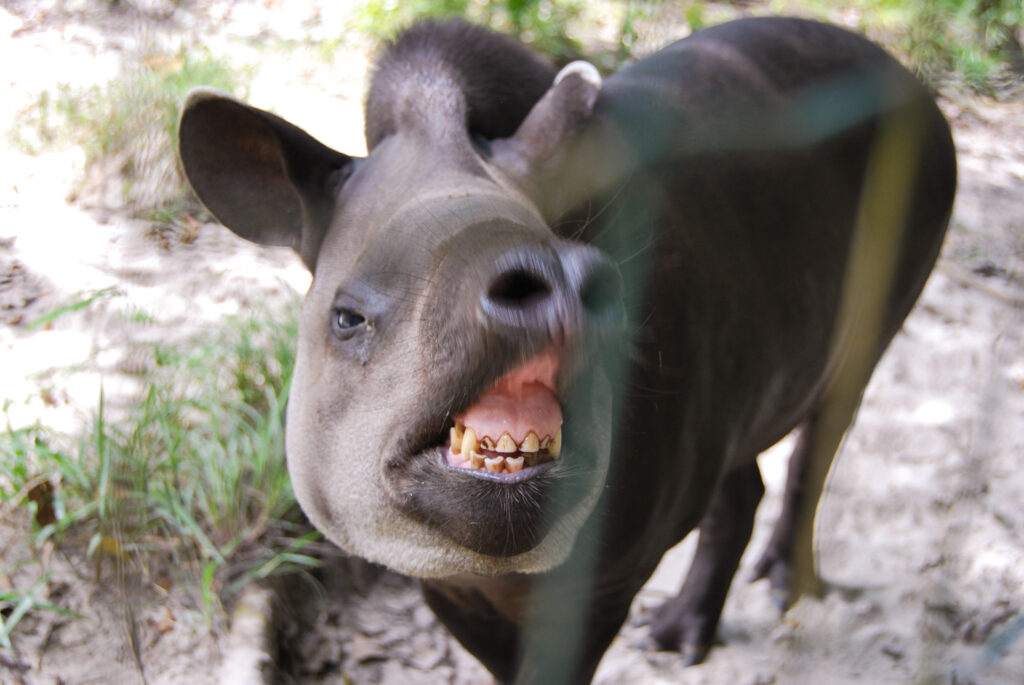
A tapir raises its bristly mane to look bigger and more threatening.
©Margus Vilbas Photography/Shutterstock.com
Pig-like Brazilian tapirs live in the forests and jungles of South and Central America. They’re instantly recognizable for the short, prehensile nose trunk, but look past that odd feature, and you spot a glorious little erect mane. A tapir’s mane is bristled, short, and black. It runs from the back of the head to the shoulders like a mohawk.
Experts think tapir manes indicate sexual maturity in males, who chiefly have larger, more bristly manes than females. Plus, when it’s raised, a tapir’s mane gives the appearance of a large and, hopefully, scarier body that puts off big cat predator attacks.
If a tapir is attacked by a jaguar or puma, the bristles provide some protection because big cats primarily hold their prey’s neck.
8. Horse

Domesticated horses have long, soft manes, but wild horses have erect, bristly manes.
©Wirestock/ via Getty Images
Domestic horses have soft, glorious manes that hang down on the side of their neck, but wild horses, like Przewalski’s horse, have short, erect manes.
Domestic horse manes are most likely the result of selective breeding. Humans admire the look of long glossy manes and it gives them something substantial to hold when riding.
Other than good looks, manes offer horses protection from the elements, crawling pests, and predator attacks.
9. Maned Sloth
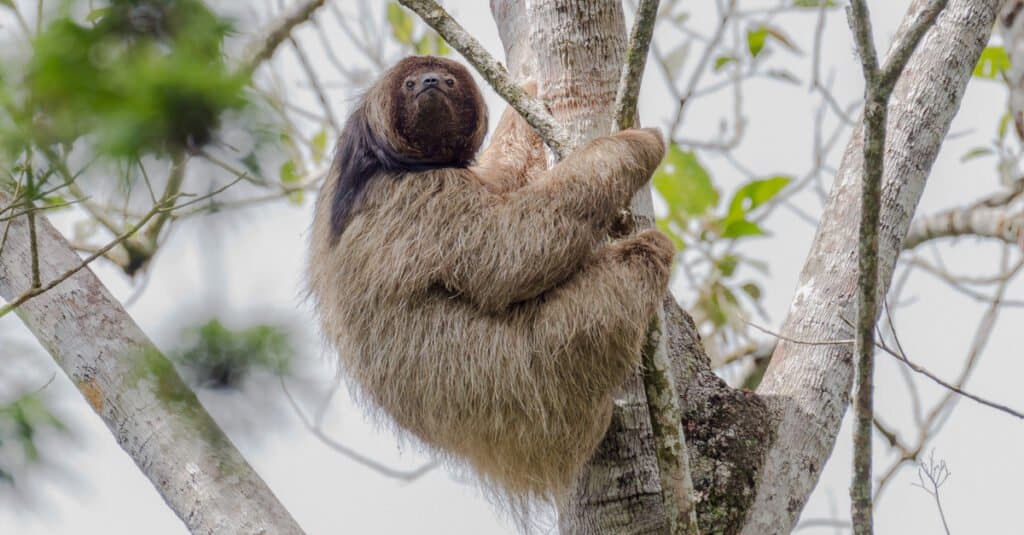
The maned sloth is endemic to Brazil’s Rio de Janeiro, Bahia, and Espirito Santo.
©Eduardo Menezes/Shutterstock.com
Maned sloths live in the southeastern and northeastern Atlantic coastal rainforests. They’re endemic to Espirito Santo, Bahia, and Rio de Janeiro’s tropical yet humid treetops, where they live camouflaged among the tree branches from jaguar attacks.
Brown-maned sloths get their name from a black mane of hair that covers their head and shoulders. Interestingly, because these amazing creatures mostly live upside down in tree branches, their fur grows from their toes to their head rather than head down.
Males have larger, longer, and darker manes than females, which points to sexual maturity. Females chiefly prefer males with more impressive manes.
Endangered maned sloths are listed as vulnerable on the IUCN Red List due to habitat fragmentation and deforestation.
10. Sable Antelope
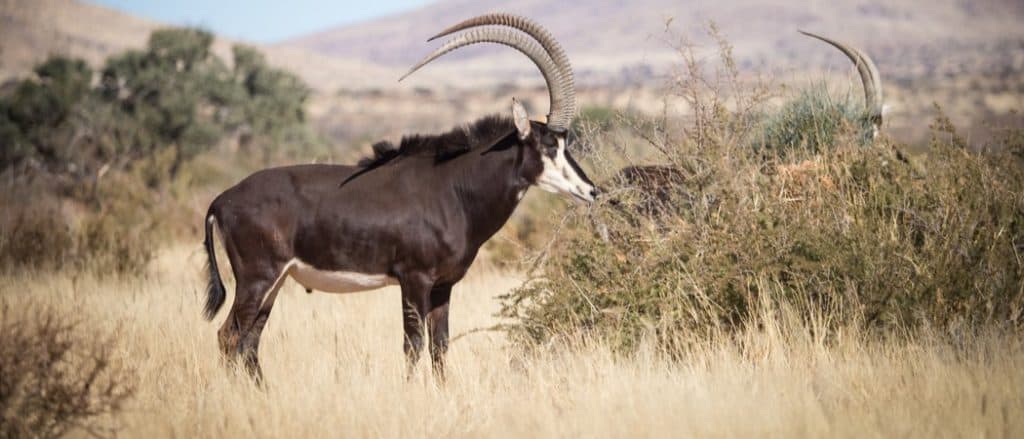
A sable antelope can raise its mane and grow several inches bigger.
©Dewald Kirsten/Shutterstock.com
Majestic sable antelope have incredibly long backward curving horns, large ears, and a semi-erect short but fluffy mane. In addition to their neck mane, a small mane is often visible on the throat, too.
Sable antelope live in Africa and South Africa, where they graze the savannah for grasses and flowers, gather at watering holes, and avoid big cat attacks.
With thick skin and a powerful neck, sable antelope are not easy prey. When threatened, they flex their necks into an arch to appear even larger. This is when their manes really make a difference, adding several inches to their height and neck thickness.
The largest males with the most impressive manes are popular with females. Conservationists think the mane also provides face, eye, and ear protection from parasites like ticks.
11. Bactrian Camel
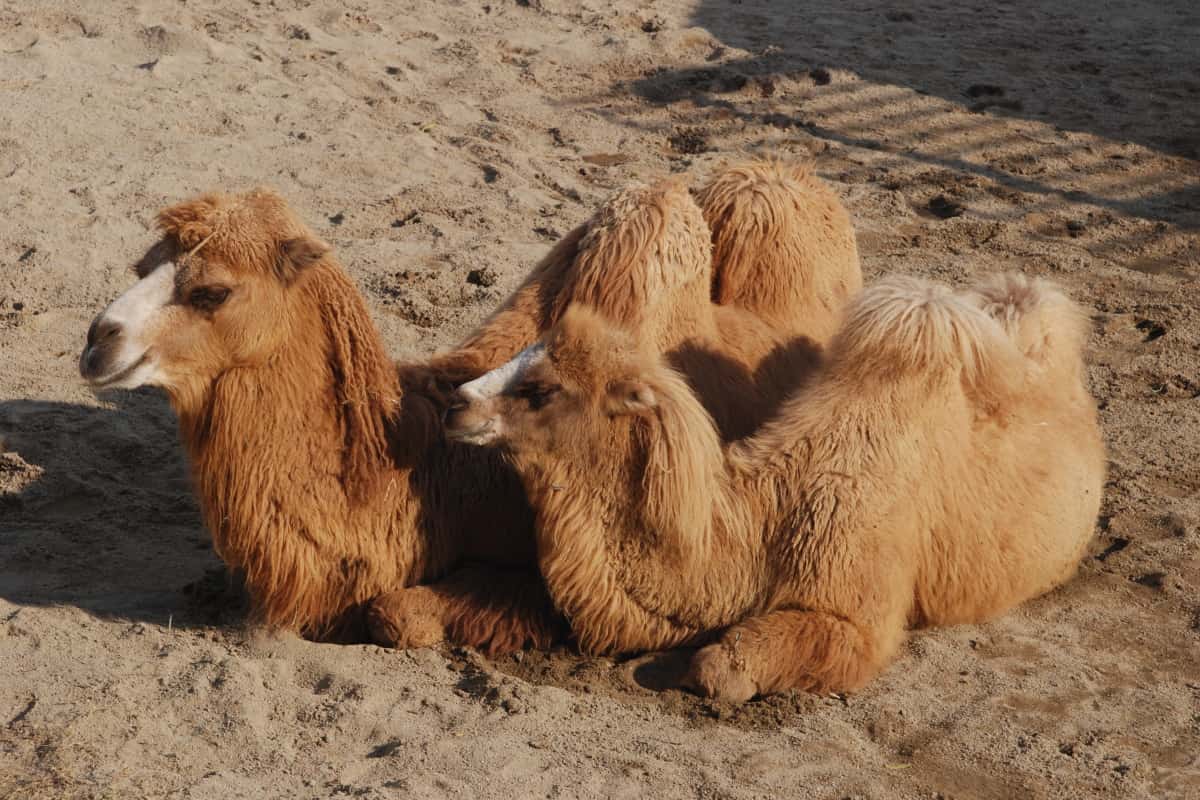
Bactrian camel manes insulate against the biting cold.
©Kuribo, CC BY-SA 3.0, via Wikimedia Commons – License
Two humped Bactrian camels are impressively adapted to withstand the elements in their native Central and East Asian desert environments.
Their humps store energy-rich fat and, to block sand, they boast two epically bushy eyebrows and two rows of inch-long eyelashes, plus their nostrils close up on command! But that’s not all. Bactrian camels have glorious neck, throat, and chest covering manes for protection against the biting winter cold.
Did you know that most Bactrian camels are domesticated? Only 400 individuals live wild.
12. Lion Tailed Macaque

A lion-tailed macaque’s silvery-gray mane indicates sexual maturity and health.
©silentstock639/iStock via Getty Images
Lion-tailed macaques are monkeys with black fur and a glorious silvery-gray mane that surrounds their faces. They really ought to be called lion-maned macaques, but their name is drawn from their tufted lion-like tail instead.
Endemic to South India’s Western Ghats, these unusual maned monkeys live in tropical humid forests where they forage leaves, insects, and fruits. Each troop is led by a dominant male, who, of course, has the most splendid mane of all to indicate his sexual maturity and rude good health.
The lion-tailed macaque’s bushy mane also helps fend off predator snake and raptor bites.
13. Hyena
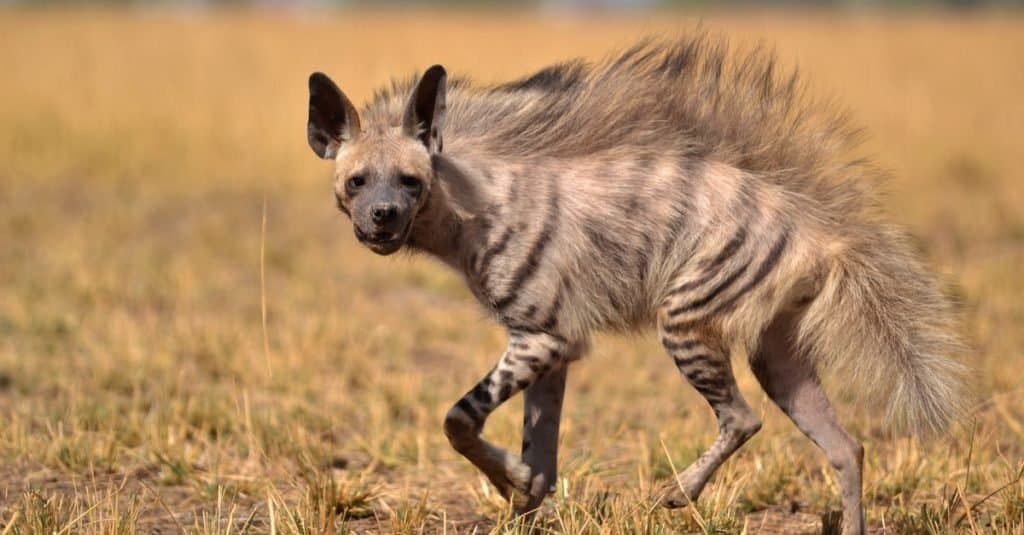
Hyena species lift their manes to communicate with other hyenas.
©Dr. Meet Poddar/Shutterstock.com
In general, a hyena’s coat ripples golden yellow, gray, brown, and black, with some species displaying stripes that help them blend into the savannah when hunting. The majority of hyenas have glorious manes of long hair from their heads to their tails, too.
When threatened, a hyena puffs up its mane to increase its size by several inches and appear more intimidating to predators like big cats and competing hyenas.
Interestingly, hyenas also use manes to communicate with other hyenas, raising and lowering the hairs to indicate aggression, submission, or playfulness.
Depending on the species, carnivorous hyenas live in Africa, Asia, or Europe, where they prey on wildebeest, antelope, and birds right down to their hooves and feathers. Hyenas actually poop white feces due to the amount of bone calcium they consume.
And did you know that hyenas have 1,100 PSI bite force? That’s one of the strongest bite forces in the animal world! It’s just a little less than a polar bear and even stronger than a lion’s.
Lions might have the most glorious manes, but hyenas have superior bite power!
The photo featured at the top of this post is © 2021 Photography/Shutterstock.com
Thank you for reading! Have some feedback for us? Contact the AZ Animals editorial team.







